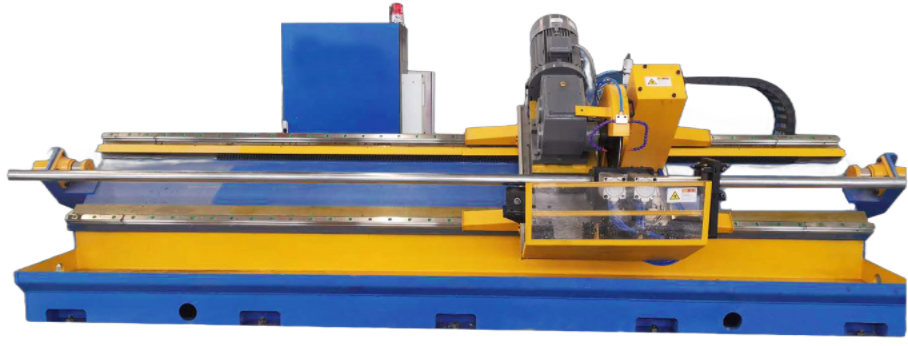tandem cold mill process
The Tandem Cold Mill Process A Comprehensive Overview
The tandem cold mill process is a crucial technique in the manufacturing of steel sheets, playing an essential role in the production of high-quality thin steel products utilized across various industries. This process encompasses several critical steps that significantly enhance the mechanical properties and surface finish of the steel. In this article, we will explore the intricate workings of the tandem cold mill process, its advantages, and its applications in modern manufacturing.
Understanding the Tandem Cold Mill Process
The tandem cold mill (TCM) process involves a series of rolling stands arranged in tandem, through which steel strips are passed to achieve the desired thickness and surface characteristics. Unlike hot rolling processes, the tandem cold mill operates at room temperature. This is crucial for producing thinner gauges and attaining superior mechanical properties due to the absence of recrystallization, giving the steel products enhanced strength and durability.
The typical configuration of a tandem cold mill consists of four to six rolling stands, where the material is subjected to successive reduction passes. A key feature of this process is its continuous operation, allowing for high-volume production with minimal downtime. The steel strip, typically processed to a thickness ranging from 0.1 mm to 4 mm, is unwound from coils, passed through the tandem stands, and subsequently coiled again into finished rolls.
Key Stages of the Tandem Cold Mill Process
1. Entry Preparation The process begins with the careful preparation of the steel strip. This includes cleaning the strip surface and maintaining appropriate tension and alignment as it enters the first rolling stand.
2. Rolling As the steel strip passes through each rolling stand, it is subjected to enormous pressure exerted by rotating rollers. The reduction in thickness occurs as the strip is elongated, with the amount of reduction controlled meticulously by the rolling mill operators. The rolling parameters such as speed, tension, and temperature are closely monitored to ensure a uniform thickness and superior quality.
3. Interstand Cooling Between each rolling stand, the steel strip may undergo interstand cooling. This step is crucial for maintaining the mechanical properties of the steel. Cooling also helps to manage the temperature rise caused by the deformation process, which could lead to unwanted changes in material properties.
4. Surface Treatment After passing through the last rolling stand, the steel strip may undergo various surface treatments to enhance its finish. These treatments may include annealing, pickling, or coating processes to remove oxides and improve corrosion resistance.
tandem cold mill process

5. Coiling Finally, the finished steel strip is coiled into rolls for storage and transportation. This coiling must be done with precision to prevent the formation of defects that could compromise the quality of the sheets in subsequent applications.
Advantages of the Tandem Cold Mill Process
The tandem cold mill process boasts several significant advantages
- High Efficiency The continuous operation of TCM systems enhances productivity, allowing for large quantities of steel to be processed in a shorter time frame.
- Superior Product Quality The ability to control rolling parameters closely results in products with consistent thickness and exceptional surface finishes, essential for high-end applications.
- Energy Savings Operating at ambient temperatures reduces the energy consumption associated with heating, which is a significant advantage in terms of operational costs and environmental sustainability.
- Versatility The tandem cold mill process can accommodate various steel grades and alloys, making it suitable for producing a wide range of products, from automotive components to appliances and construction materials.
Applications in Modern Manufacturing
Tandem cold mills are integral to various industries. They provide the materials necessary for creating automotive body panels, household appliances, and construction materials. The increased demand for lightweight materials with high strength has further propelled the use of products fabricated through this process.
In conclusion, the tandem cold mill process is a vital technology in the steel manufacturing industry. Its ability to produce high-quality thin steel sheets efficiently makes it indispensable for modern applications. As industries evolve and the demand for advanced materials increases, the importance of the tandem cold mill process in delivering superior products will continue to grow, setting the stage for innovations in steel processing technologies.
-
High Frequency Straight Seam Welded Pipe Production Line-BzZhou Xinghua Machinery Equipment Manufacturing Co., LTD.|Precision Welding, High EfficiencyNewsJul.30,2025
-
High Frequency Straight Seam Welded Pipe Production Line|BzZhou Xinghua|Precision Welding&EfficiencyNewsJul.30,2025
-
High Frequency Straight Seam Welded Pipe Production Line - BzZhou Xinghua|Precision Engineering&EfficiencyNewsJul.30,2025
-
High-Frequency Straight Seam Welded Pipe Production Line-BzZhou Xinghua Machinery Equipment Manufacturing Co., LTD.NewsJul.30,2025
-
High-Frequency Straight Seam Welded Pipe Production Line-BzZhou Xinghua Machinery Equipment Manufacturing Co., LTD.|Precision Manufacturing, High EfficiencyNewsJul.30,2025
-
High Frequency Straight Seam Welded Pipe Production Line-BzZhou Xinghua Machinery Equipment Manufacturing Co., LTD.|Precision Steel Pipe Manufacturing&Industrial EfficiencyNewsJul.29,2025


